We may earn a commission when you click on the affiliate links in this post.
Light, airy, and irresistibly cheesy—this authentic Brazilian Cheese Bread (Pão de Queijo) comes together fast with simple ingredients. It’s naturally gluten-free, freezer-friendly, and packed with flavor.
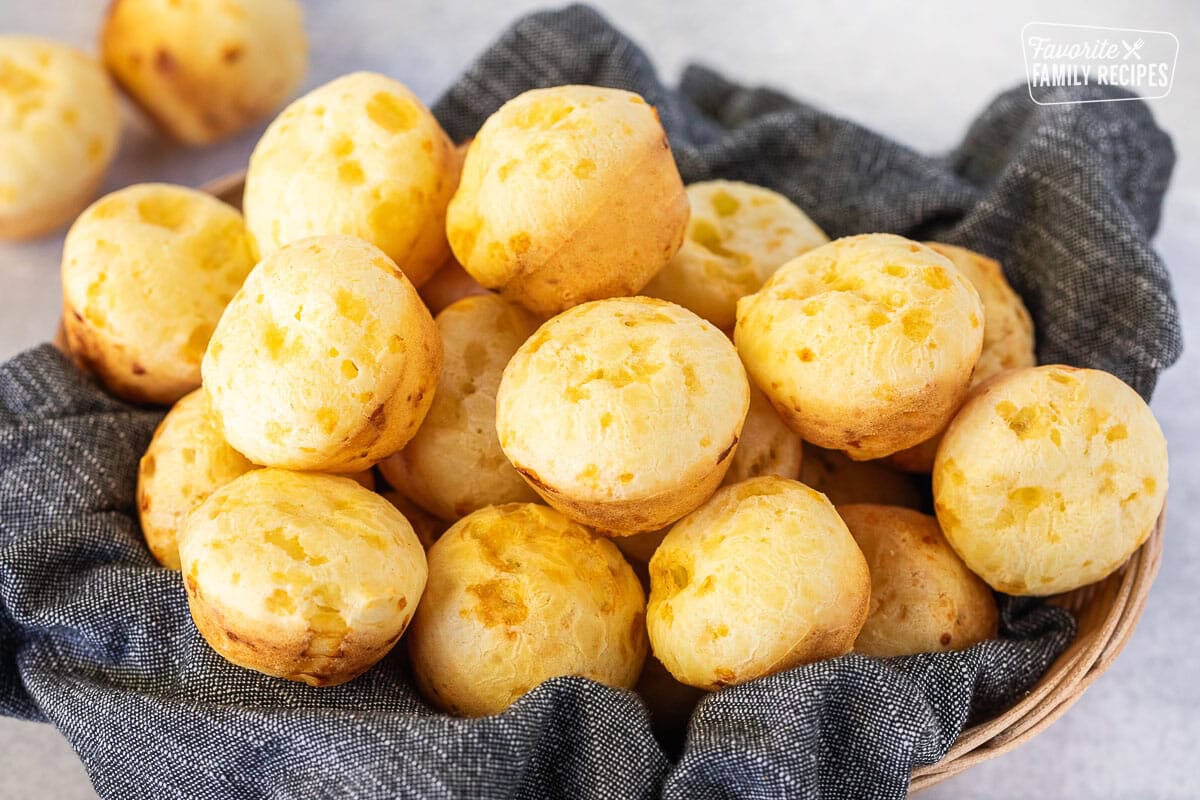
Table of contents
A Taste of Brazil at Home
When my husband went to Brazil back in the 90’s he fell in love with these little Brazilian cheese bread bites. He ate them every chance he could! After we were married, he tried to describe them to me but I had no idea what he was talking about. Years later we found them at a restaurant called Tucanos Brazilian Grill in Utah, and I was finally able to see (or taste) what all the fuss was about. They definitely lived up to his hype!
The smell alone was heavenly, but biting into that warm, cheesy goodness? Game over. I had to stop myself from devouring the entire basket right there. Now I make them at home along with Brazilian Rice and Beans and Brazilian Limeade, and they’re always a hit with friends and family.
I’m so excited for you to try them!
🩷 Erica
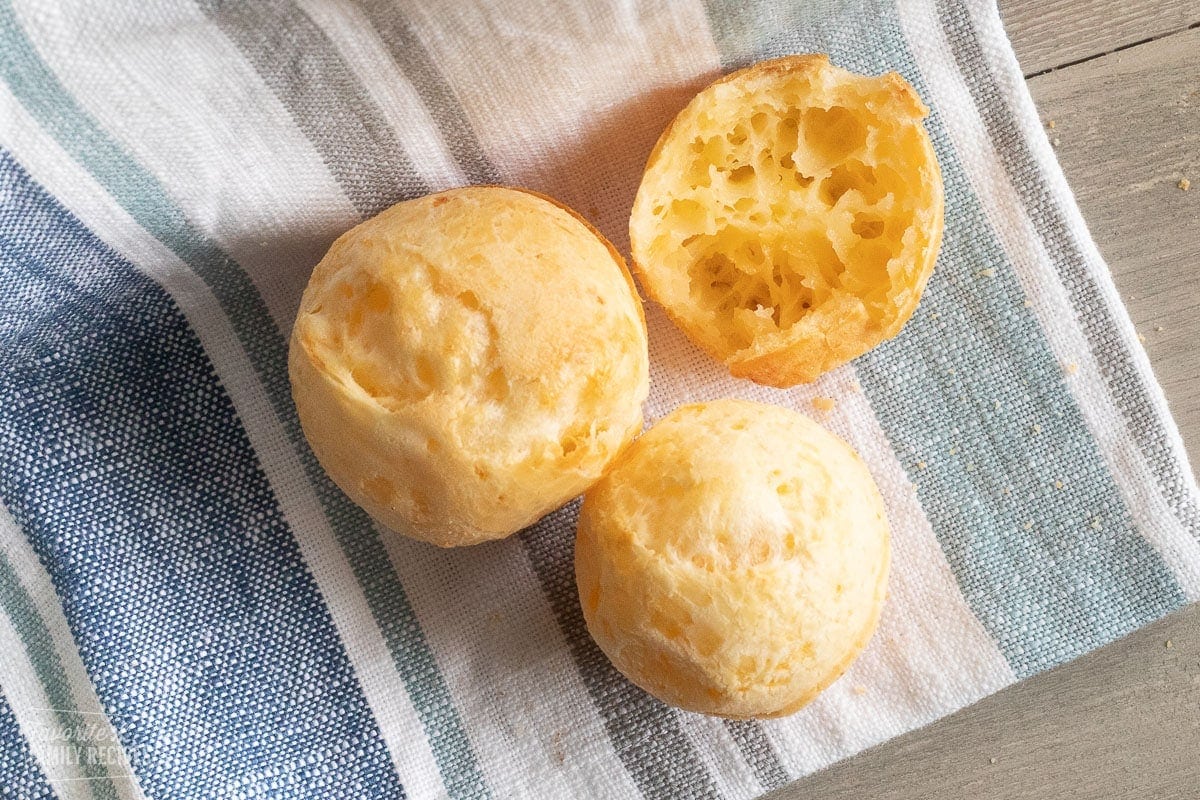
What is Pão de Queijo?
Pronounced “pow duh kay-ju”, this classic Brazilian roll translates to “cheese bread” in Portuguese. But unlike traditional bread, Pão de Queijo is made with tapioca flour instead of wheat flour, which gives it that unique chewy texture. No yeast required!
Pão de Queijo is a staple in Brazilian cuisine, often served at breakfast or as an afternoon snack. You’ll also find it at churrascarias (aka Brazilian steakhouses). The best part? You can easily make it at home with simple ingredients.
Key Ingredients

Tapioca Flour (or Tapioca Starch): The star of the show! Be sure to use tapioca flour specifically—other flours won’t give you the right texture. Two main types of tapioca flour are used in Pão de Queijo. Both types are gluten-free and contribute to the unique characteristics of Brazilian cheese bread.
- Sour tapioca flour (polvilho azedo) adds a tangy flavor and extra chewiness.
- Sweet tapioca flour (polvilho doce) offers a more neutral taste.
Cheese: Queijo Minas is traditional, but it’s hard to find in the States. The best substitute is a mix of sharp cheddar and Parmesan cheese (or Parmigiano Reggiano). This will give you the perfect blend of smooth and bold flavors. Grate it finely so it incorporates evenly.
How to Make Brazilian Cheese Bread
Traditional Method (My Favorite!)
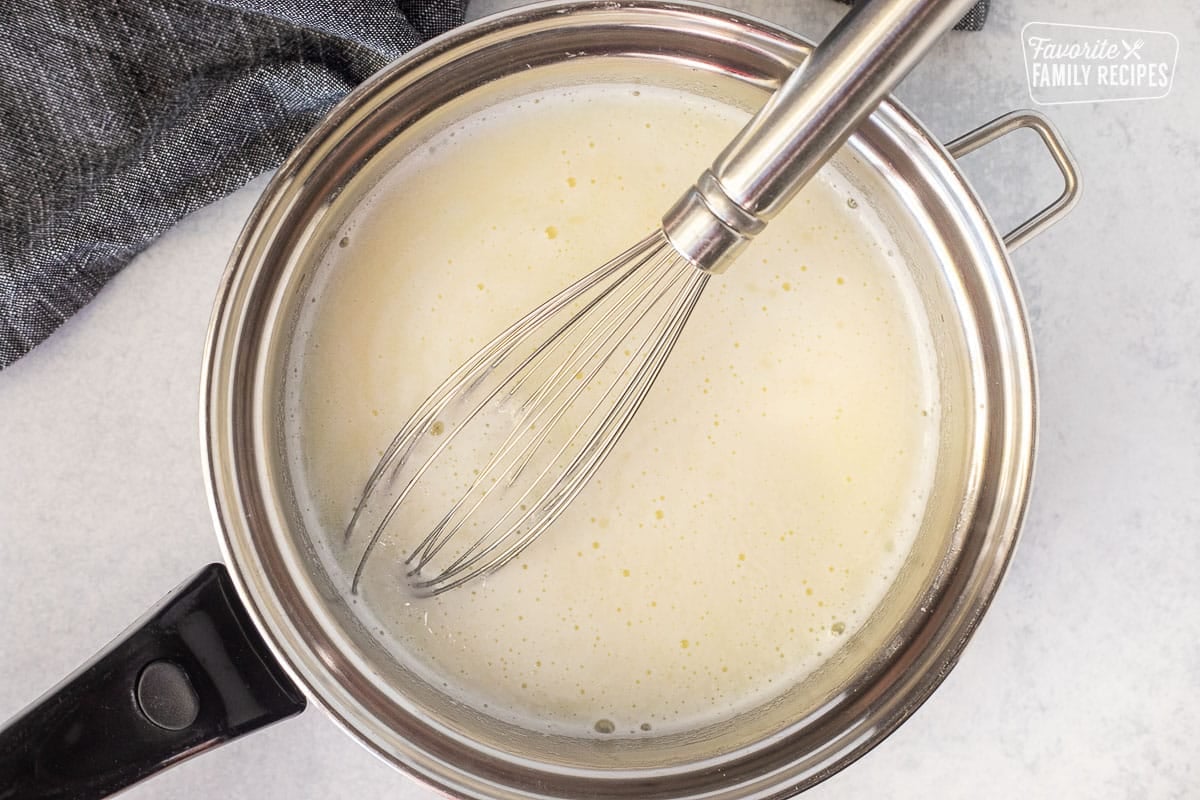
- In a saucepan, warm the milk, oil, and salt until it begins to simmer. Remove from heat.
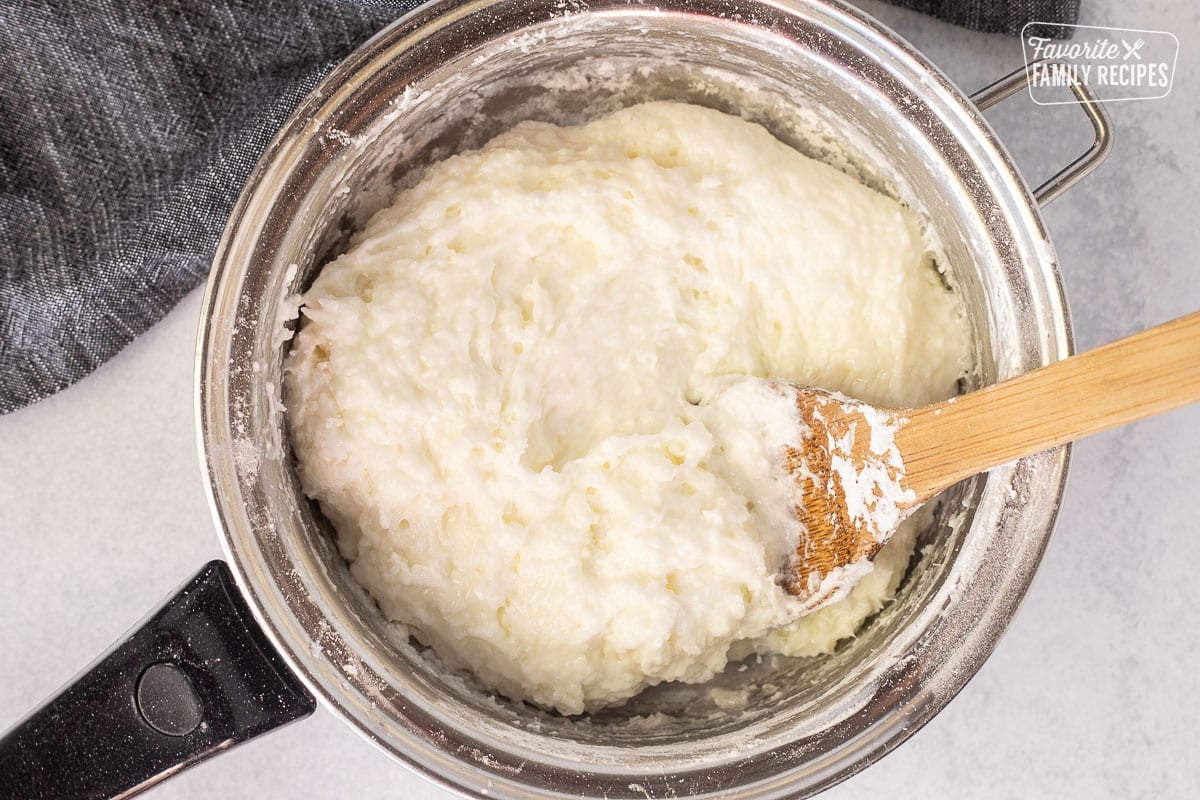
- Gradually stir in tapioca flour until the dough becomes grainy and gelatinous.
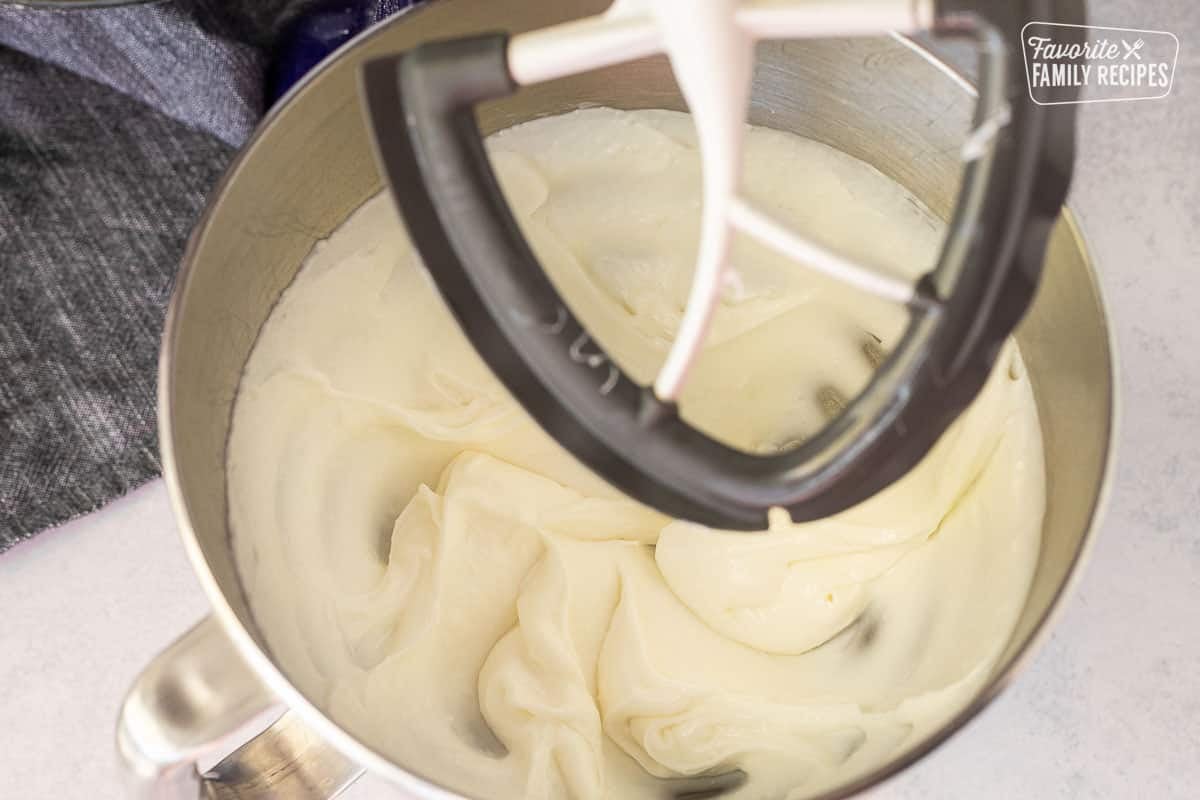
- Transfer to a stand mixer with a paddle attachment. Beat on medium speed until smooth and cooled slightly.

- Whisk the eggs separately. With the mixer running, add the eggs in two batches, letting each fully incorporate. Then mix in the cheese until the dough is sticky and stretchy.
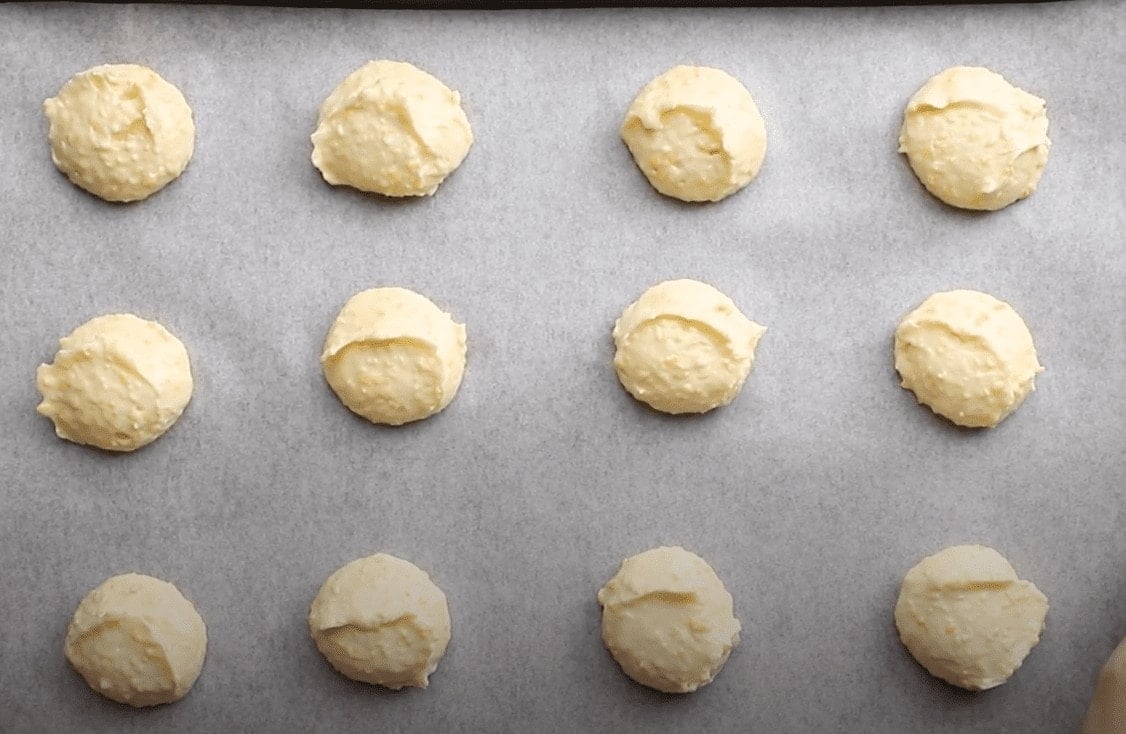
- Use a cookie scoop or spoon to form 1-2 inch balls.
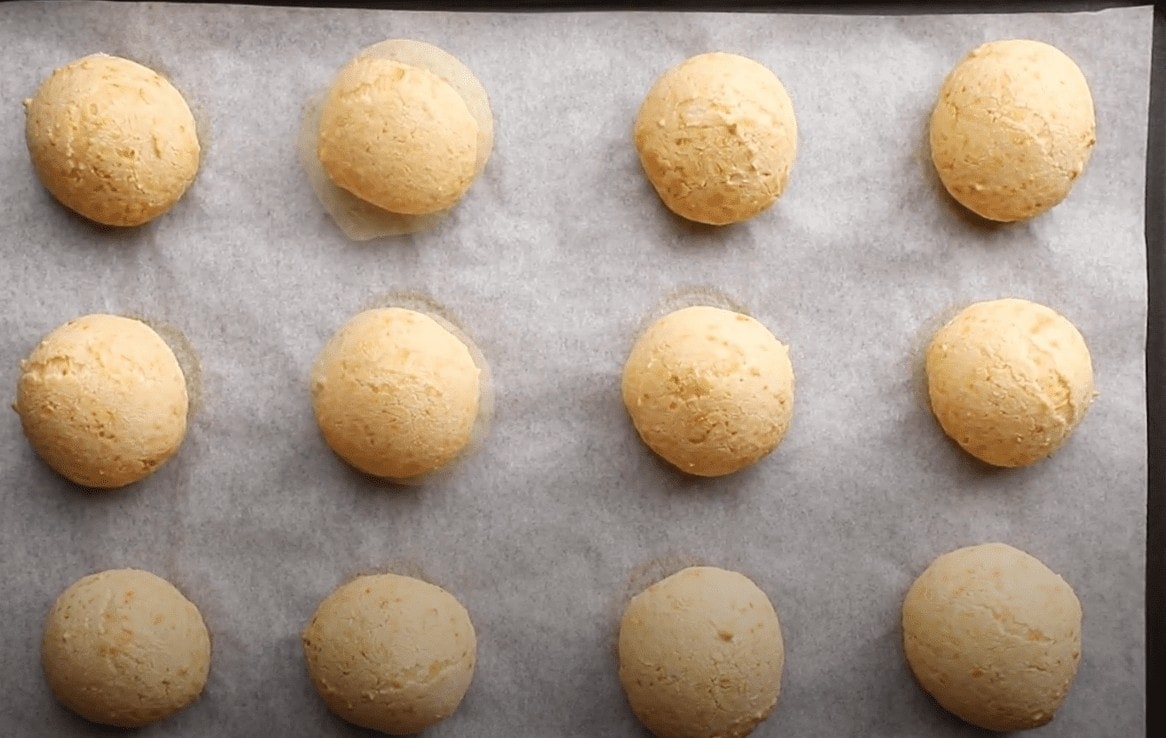
- Place on a parchment-lined baking sheet and bake for 25-28 minutes until puffed and golden.
Quick Blender Method (For When You’re in a Hurry)
This is the best way to make Brazilian cheese bread if you are in a hurry or simply want to make things easier on yourself. Here’s what you do:

- Preheat oven to 400°F. Add all ingredients except cheese to a blender. Blend until smooth (about 20 seconds), scraping down the sides as needed. Pulse in the cheese 3-4 times until evenly incorporated.
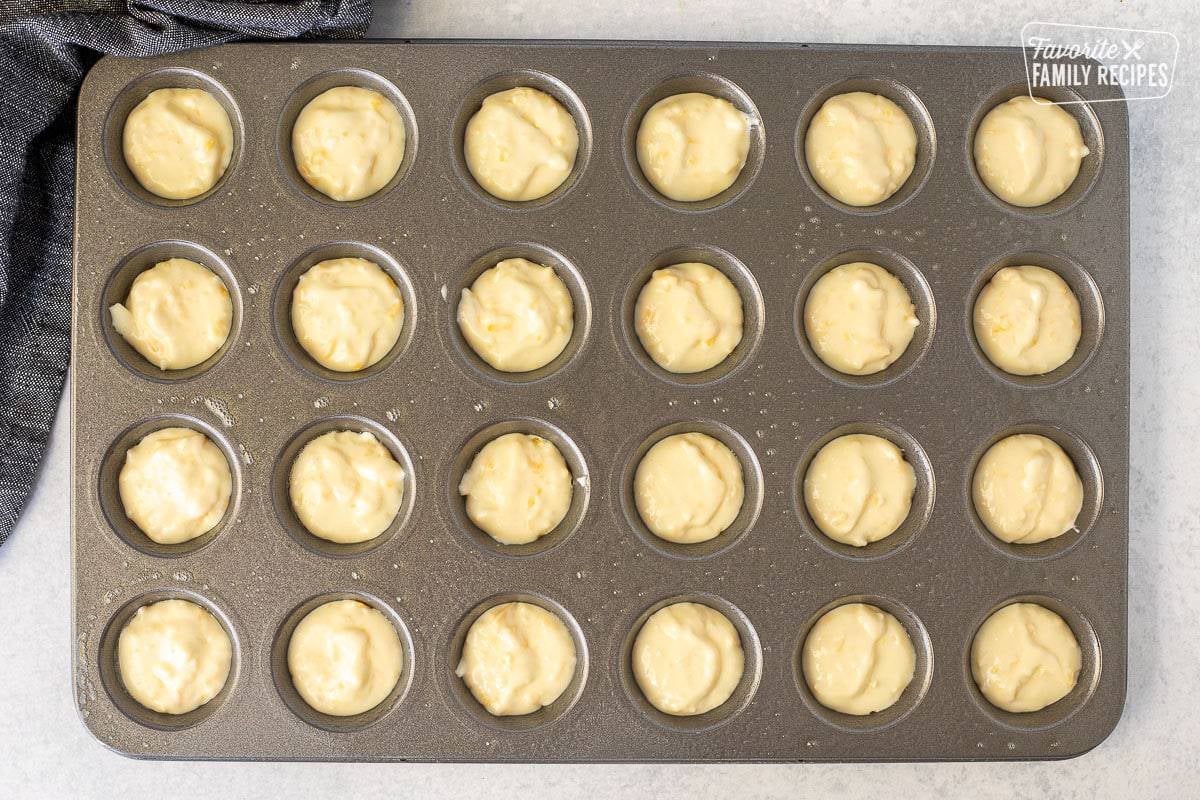
- Pour the batter into a greased mini muffin tin. You may need to use a spoon to help get the batter in without making a mess.
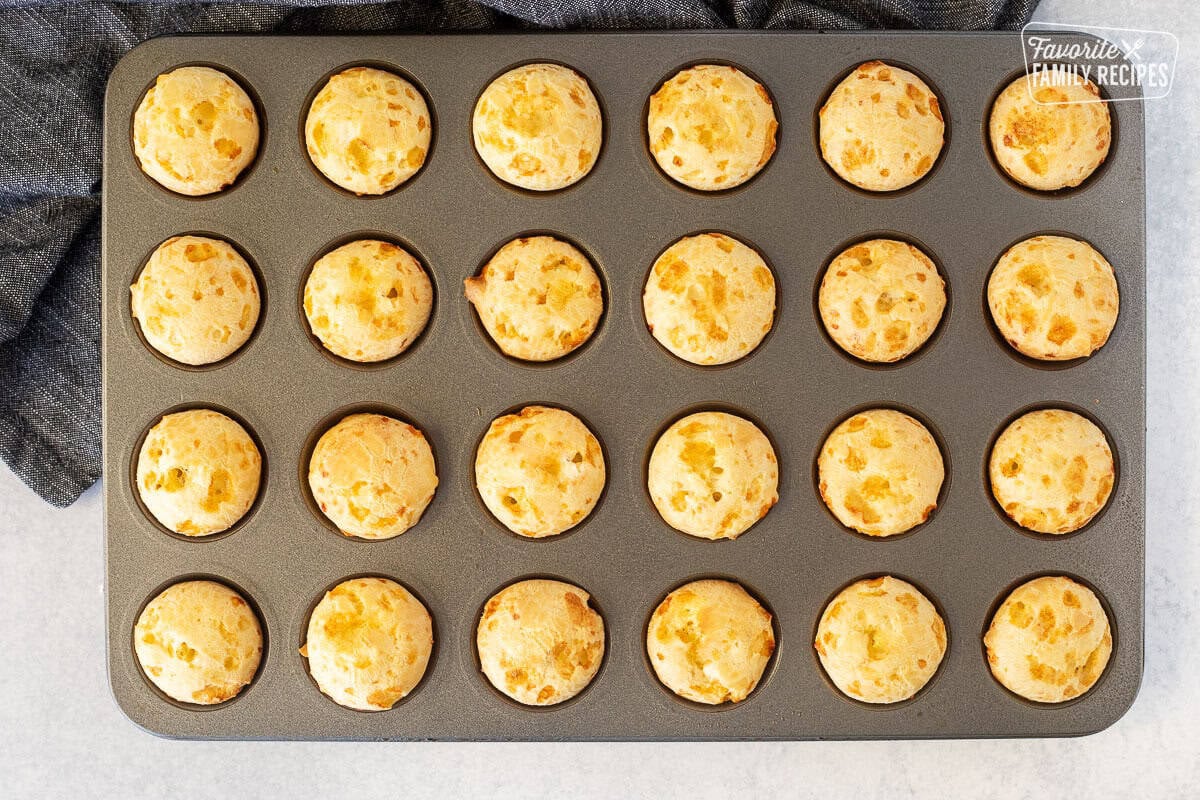
- Bake for 15-20 minutes. Don’t over-bake! The texture on the outside is more dry and “bread” like and the inside is more soft and chewy.
Pro Tips
- Use high-quality tapioca flour: Not all brands are the same—Bob’s Red Mill is a reliable option for consistent texture and puff. Make sure you’re using tapioca flour (also called tapioca starch), not cassava flour, which is slightly different in grind and baking behavior.
- Shred your own cheese – Pre-shredded cheese often contains anti-caking agents that can affect how well the cheese melts and incorporates into the dough. Hand-shredded Parmesan and cheddar melt better and give richer flavor.
- Customize Cheese Blends: Experiment with different cheeses for unique flavors. Gouda
- The dough will be sticky—embrace it: It’s supposed to be a little stretchy and wet, somewhere between a thick cake batter and cookie dough. Using a cookie scoop (dipped in water or sprayed with nonstick spray) will make portioning much easier.
- Don’t Overbake – Bake just until golden to keep the center chewy.
Storing, Freezing, and Re-Heating
Brazilian cheese bread is best enjoyed warm from the oven, but it stores and freezes nicely too! Let leftovers cool completely, then store them in an airtight container at room temperature for up to 2 days. For longer storage, freeze the baked cheese breads in a single layer on a baking sheet, then transfer to a freezer-safe bag or container for up to 2 months.
To reheat, place them in a 350°F oven for 5–8 minutes or air fryer for 1-2 minutes until warmed through and slightly crisp. For a quick option, microwave 1–2 rolls for about 10-15 second, but keep in mind, they’ll be softer and won’t have that crispy outside. You can also freeze the unbaked batter in silicone molds and bake straight from frozen, just adding a few extra minutes to the cook time!
Frequently Asked Questions
Yes! That gooey center is part of the charm. Tapioca flour naturally creates a chewy texture even when fully cooked.
That’s totally normal! The dough should be soft, stretchy, and sticky—somewhere between cake batter and cookie dough. Use a cookie scoop sprayed with cooking spray or dipped in water to make portioning easier.
Flat cheese bread usually means the dough was too runny. Make sure it’s thick enough to form balls. Measuring ingredients carefully will help.
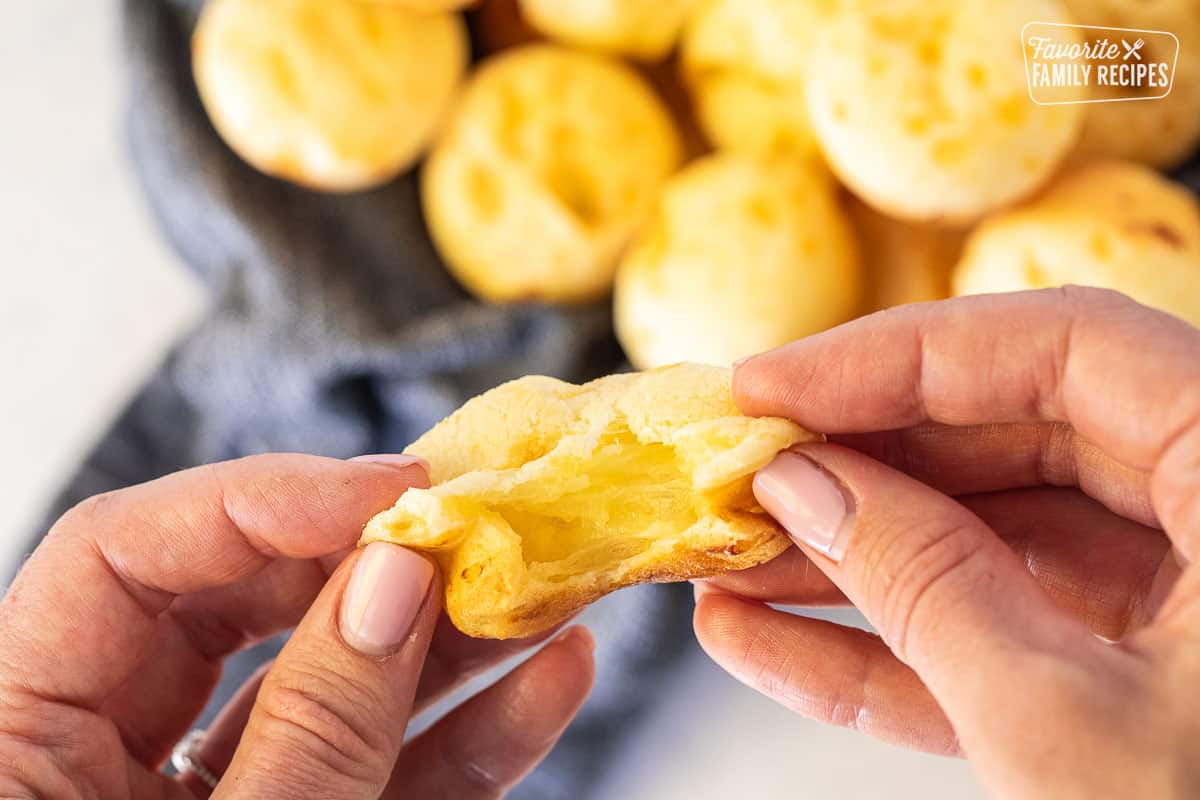
Have you tried this Instant Pot BBQ Chicken? I’d love to hear what you think! Drop a comment below and let me know how it turned out—or how you made it your own! ❤️

Brazilian Cheese Bread Recipe (Pao de Queijo)
Ingredients
- 1 cup whole milk
- 1/2 cup vegetable oil
- 1 teaspoon salt
- 2 cups tapioca flour (I use Bob's Red Mill in the gluten-free section of the grocery store)
- 2 eggs
- 3/4 cup Parmesan cheese (freshly hand shredded)
- 3/4 cup sharp or medium cheddar cheese (freshly hand shredded)
Instructions
- Preheat oven to 350 degrees.Combine the milk, oil, and salt in the saucepan, and whisking occasionally, bring it to a gentle boil over medium heat. Remove from heat as soon as you see big bubbles coming through the milk.
- Add all of the tapioca flour to the saucepan and stir until you see no more dry tapioca flour. The dough will be grainy and gelatinous at this point.
- Transfer the dough to the bowl of a standing mixer fitted with a paddle attachment. (Alternatively, you can do the next few steps by hand. Be prepared for a work-out.) Beat the dough for a few minutes at medium speed until it smooths out and has cooled enough that you can hold your finger against the dough for several seconds.
- Whisk the eggs together in a small bowl. With the mixer on medium, beat the eggs into the dough in two additions. Wait until the first addition has been fully incorporated into the dough before adding the second. Scrape down the sides of the bowl as needed.
- With the mixer on medium, beat in the cheese until fully incorporated. The resulting dough will be very sticky, stretchy, and soft with a consistency between cake batter and cookie dough.
- Using a cookie scoop, a tablespoon measure, or a dinner spoon, scoop rounded portions of the dough into mounds on the parchment-lined baking sheet.
- Space the mounds an inch or two apart. Dip your scoop in water or spray with cooking spray to prevent sticking.
- Transfer the sheet with the puffs to the oven and bake for 25-28 minutes, until the puffs have puffed, the outsides are dry, and they are JUST starting to color. Do not over bake! Cool briefly and eat.
Video
Notes
- Preheat oven to 400°F.
- Add all ingredients except cheese to a blender. Blend until smooth (about 20 seconds), scraping down the sides as needed.
- Pulse in the cheese 3-4 times until evenly incorporated.
- Pour the batter into a greased mini muffin tin.
- Bake for 15-20 minutes.
Nutrition Information
More Bread Recipes to Try
In our family, no dinner is complete without some type of bread or roll. Here are a few of our tried-and-true favorites:
Dinner Rolls
Homemade Crescent Rolls
Pani Popo (Samoan Coconut Rolls)
Mom’s Homemade Rolls
Easy Monkey Bread
Irish Soda Bread
Rosemary Garlic Focaccia Bread
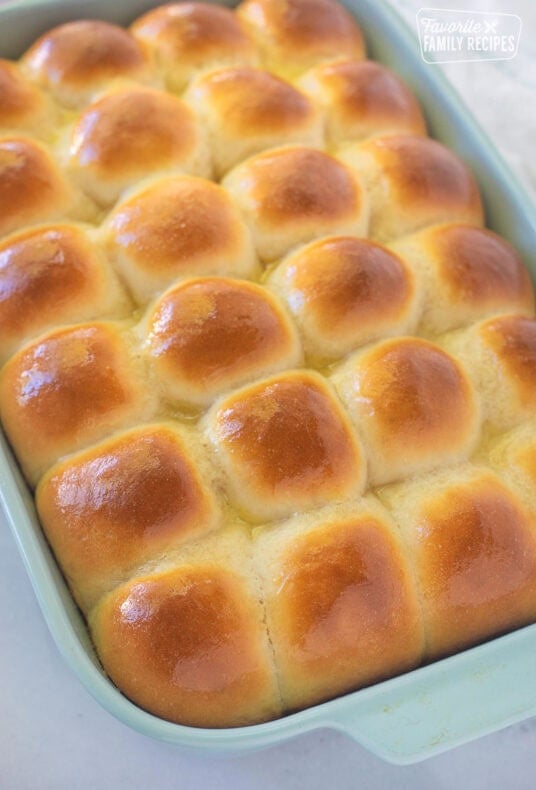
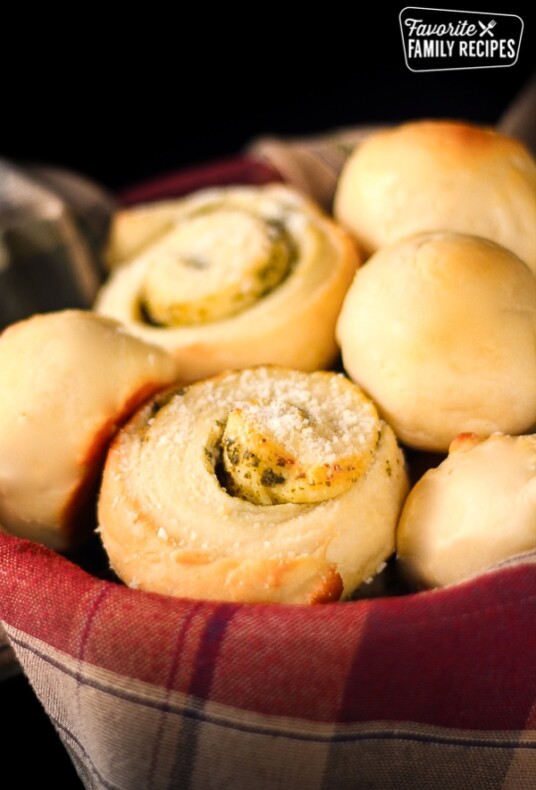
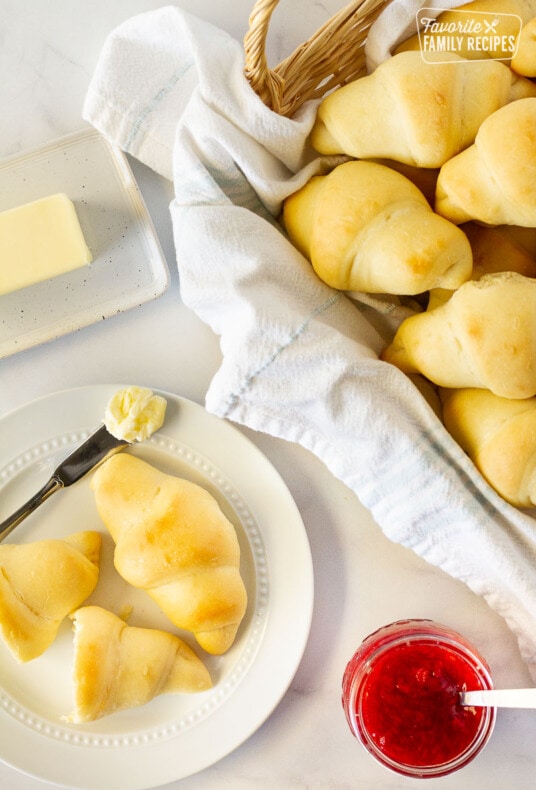
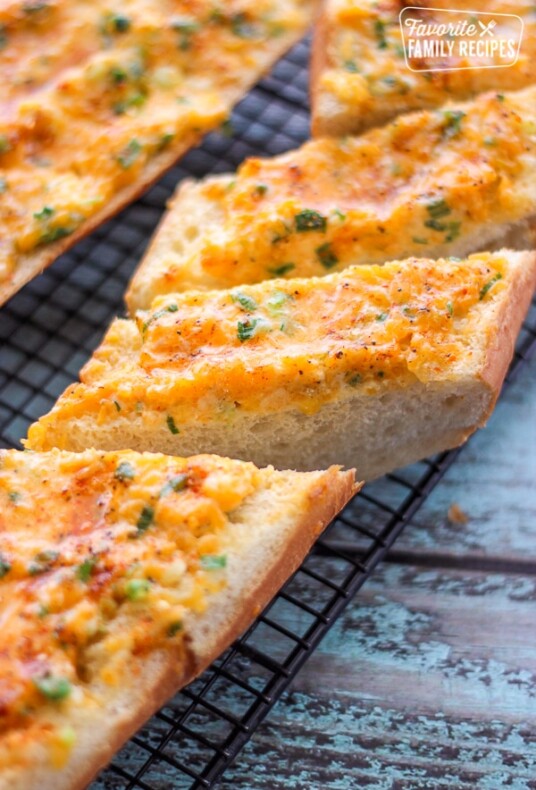
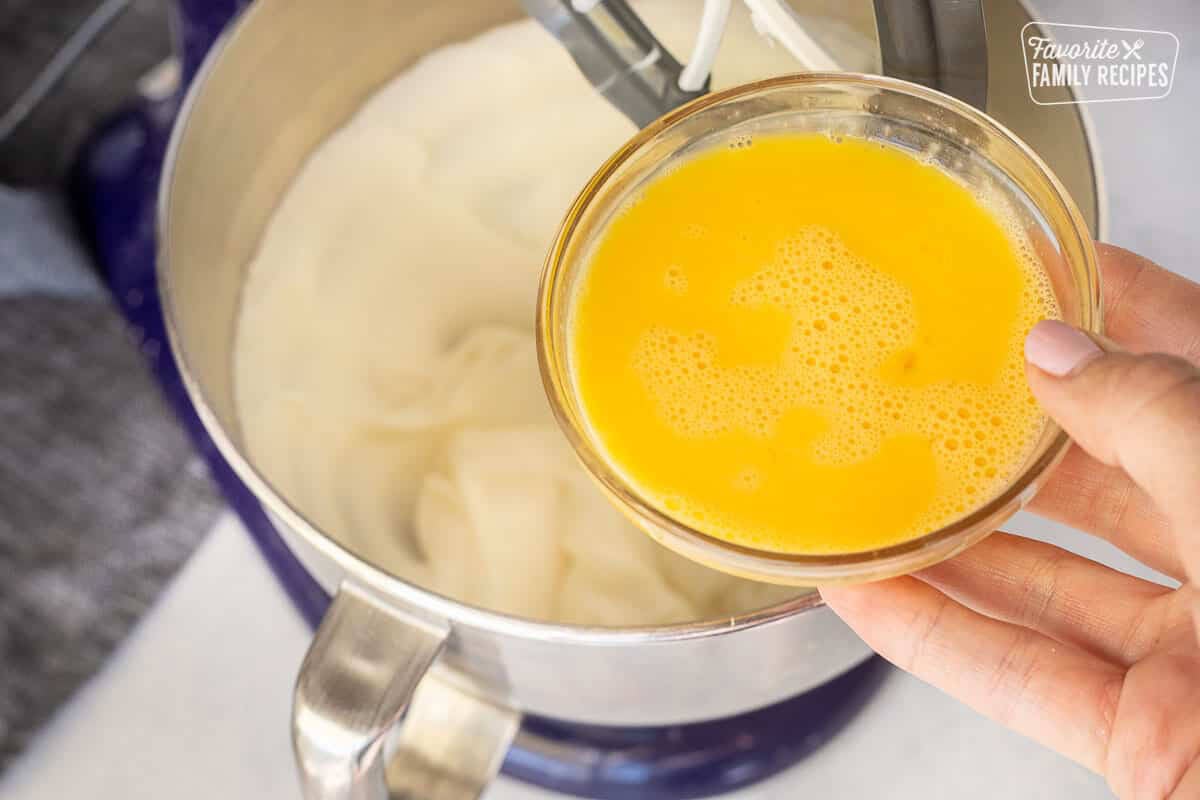

Best recipe I’ve found. It’s delicious, crisp outside, soft inside and all-round incredible.
Yay thank you so much! So glad you liked this recipe 🙂 Thanks for the kind comment!
easy question: The recipe says to preheat to 400 degrees in 1 place and then 350 degrees somewhere else. Which one do I use?
thank you.
So the 400 degrees is found in the post above the recipe. This is for the variation to make the recipe in the blender. This bakes on a higher heat for less time. If you follow the recipe card it is 350 degrees for more time. It just depends on which variation you want to make. Hope this helps!
The 400 degrees is also listed in the post for the traditional method. It’s only the recipe card that says 350 degrees. I was confused by that too! Can you use either temp for either variation?
Sorry yes I will clarify — 400-degrees is for the “quick method” because it only bakes for 15 min, 350 degrees is for the traditional method and it cooks a bit longer. If you use the 400 degree temp for the “traditional” method, bake for 12 min and then keep an eye on it. Hope this makes sense!
Yes it does, thank you for the reply!
This is an amazing recipe! I tried to make Brazilian cheese bread for the first time and the balls turned out how I used to get them frozen from a store. The flavor, taste, and texture are exactly what I get from an expensive tiny bag at a store. But for these I used 4 different kinds of cheese and I multiplied this recipe for 6x times! My big family loves this bread and I am glad I made so much! Now I will freeze them and take out as much as I need and bake them and have them fresh every time! Thank you so much for this recipe! I have it now in my recipe book!
I’ve been making these for a long time and they are absolutely delicious! Want to add that they freeze and bake perfectly as though you just made the batter. Thanks again for sharing your recipe!
I actually did this recipe 3 times today, and once the authentic way in the past! I was so successful in the past. I have no idea what happened today, but all three times, when I stir in my tapioca starch, it became straight up liquid. I don’t know why I cannot achieve that grainy texture anymore. Wish I could show an actual picture…Anybody might know the reason?
I saw in your previous comment that you were doubling the recipe. Sometimes doubling a recipe doesn’t work because the quantities of ingredients won’t blend together right. I would suggest making one batch at a time. Hope this helps!
We had the same issue. Ultimately added about another 3/4 cup of tapioca flour to the batter. We also added about another 1/2 cu of shredded cheese.
Super recipe, nice and easy. I have just made batch for my family to enjoy on a long car trip beyond the arctic circle to go skiing.
It would be handy to have metric measures and Celsius temperatures for all recipes.
Thanks for the great insight, it’s something we will definitely look into for the future 🙂
Absolutely delicious and simple . I used a hand held electric mixer . It was a rather messy time transferring the spoons full of dough onto the baking paper ! My family are hooked on these tasty little balls. Thank you.
I tried to make these using the blender method, and the “dough” is quite runny. It certainly can’t be scooped onto a cookie sheet to freeze (which I was hoping to do). I followed the recipe as written. What went wrong?
If you use the blender method the dough will be a little more runny. That is why we suggest baking it in muffin tins. See instructions below:
Preheat oven to 400-degrees
Put all the ingredients except the cheese in a blender.
Blend until smooth (about 20 seconds) then scrape the sides of the blender.
Add cheese and pulse 3-4 times to incorporate.
Spray a mini muffin pan with cooking spray and fill each cup with the cheese mixture until almost full.
Place in the oven and bake 15-20 minutes or until the outside of the rolls are golden brown and puffed up. Do not over bake! The texture on the outside is more dry and “bread” like and the inside is more soft and chewy.
Ive tried several recipes for this and finally one that works! Easy to follow and consistent results.
I doubled this recipe and they were amazing! I froze them and baked them the next day, will definitely make them again. Thanks!
Yeast and gluten are not synonymous, they often go hand in hand, but yeast doesn’t have or make gluten, and gluten containing recipes often have no yeast.
Would be better if the measurements were done by weight instead of volume, I’m pretty sure the dough was way too thin as these ended up more like cookies instead of puffs.
Also, for first timers, tapioca starch has about the same consistency as corn starch so it can easily go everywhere when you’re dry pouring it, but it gets SUPER sticky once you start to mix, so using something like a whisk isn’t a great idea, unless you enjoy trying to get a giant glob of gooey out of the middle of your whisk.
I made these (using the traditional method) and they were so tasty! I did get concerned for a bit when it seemed like the dough was not coming together–the flour/milk mixture was separated from the oil and not combining in my stand mixer. I took some time to break the flour/milk up with my hands and then it started to incorporate! I started cooking these at 400 for 20-25 minutes, but they were underbaked inside, so dropped the temp down to 350 and cooked for another 10, and that worked well.
I made these this morning for breakfast and it was an absolute success. I took me 20min total and my kid helped. I was very exceptical with the blender method but it actually works! Saving this and doing it again and again and again…. 🤩
To cook good food not all people know that to cook good food, the mind should also be clean and I have seen your post and the recipe you have made is very beautiful, I sincerely hope that when I make these recipes, I will very happy i will definitely try it. https://anupatel.in/
Can I use egg whites instead of including the yolks?
We haven’t tried it that way so I can’t say how it would affect taste or texture.